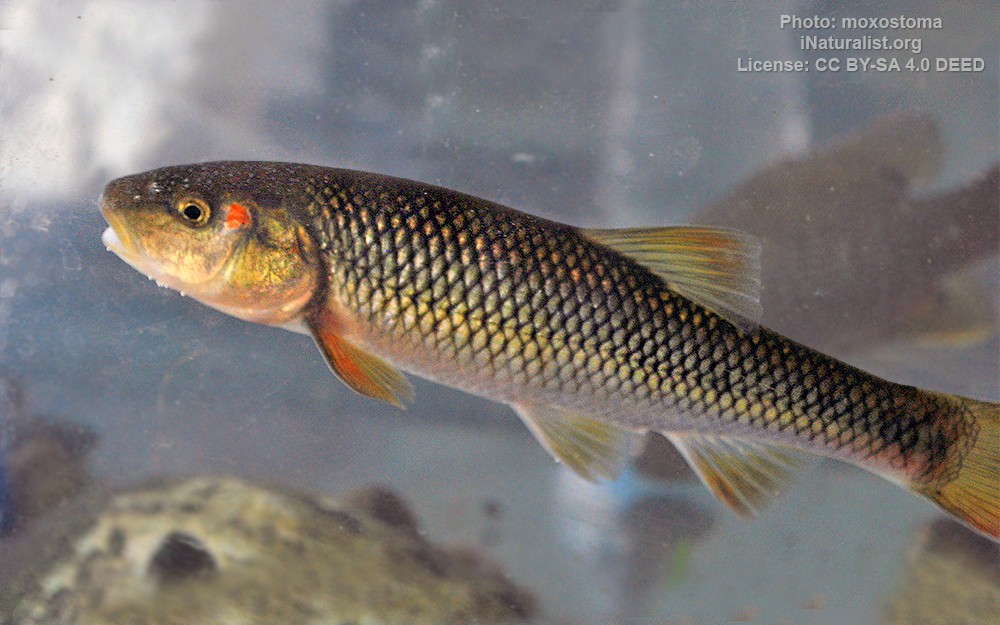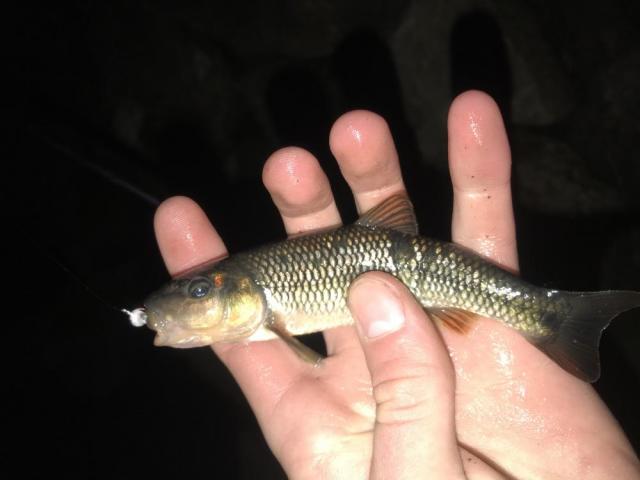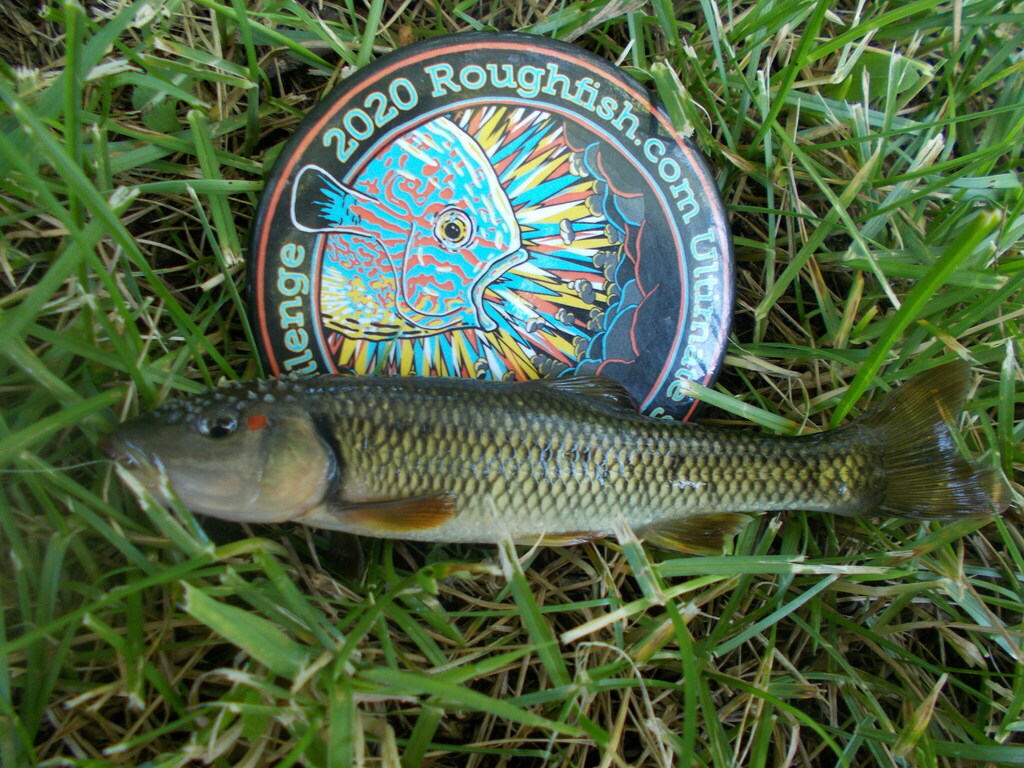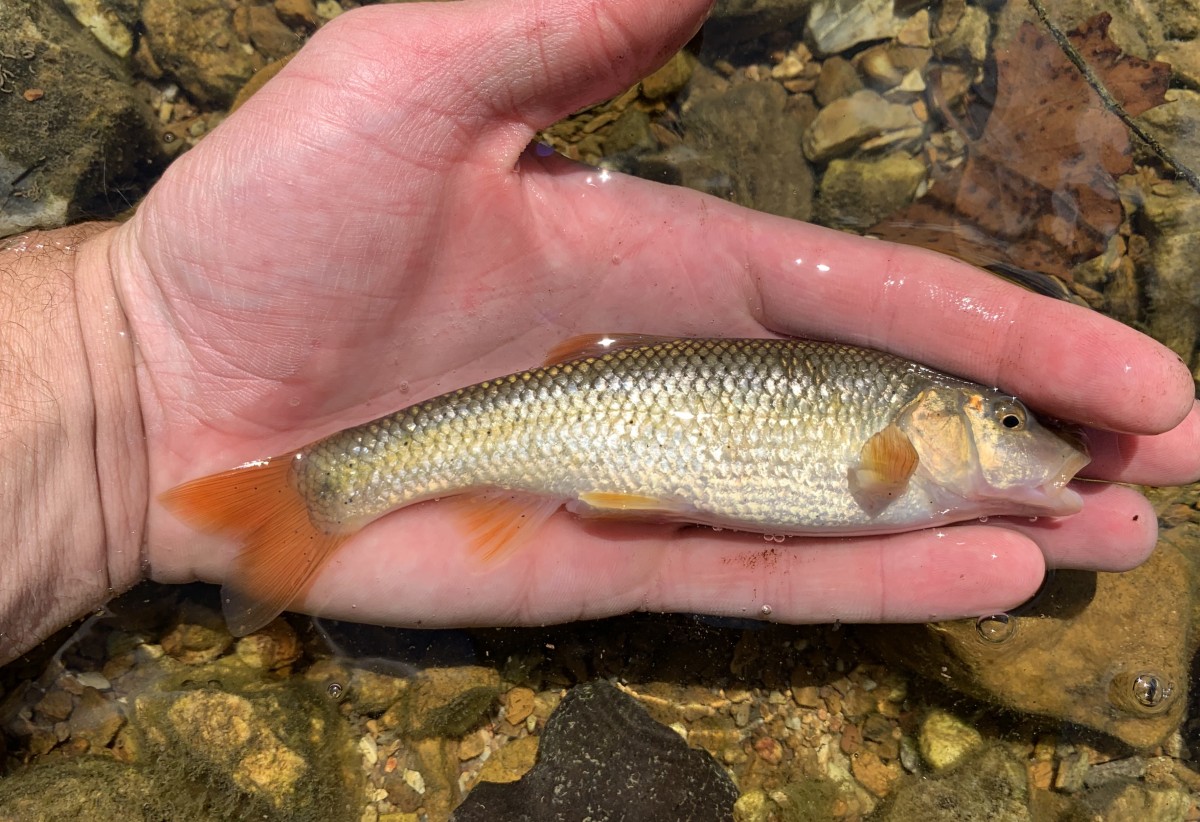Hornyhead chub
(Nocomis biguttatus)

Classification
General data
The hornyhead chub ranges from Wyoming, North Dakota, and South Dakota, east to the Hudson River drainage and south to Oklahoma. In South Dakota, the hornyhead chub is at the western edge of its range. Hornyhead chubs have been found in several water bodies in the Minnesota River Basin including the north and south forks of the Yellowbank River, Monigan Creek, Cobb Creek, Whetstone Creek, the North Fork of Whetstone Creek and Gary Creek in Roberts, Grant and Deuel Counties, as well as in Big Stone Lake in Grant County.
They are also found in the Mississippi River basin, Red River drainage, Ohio River and lower Kentucky River systems.
They can be found from New York west into the Dakotas with isolated populations in the Platte and Colorado River Systems, and north from Manitoba and south into Kentucky.
There are hornyhead chubs in Georgia below Chattahoochee Forest National Fish Hatchery on Rock Creek and Toccoa River in Suches, GA.
The Hornyhead chub is moderate in size and slightly subterminal with an inconspicuous barbel in corner of mouth. This fish has no teeth. A body pattern of a back olive brown in color, with its sides having silvery color, and a belly of white. It also has a dark lateral stripe and a spot at the base of the tail, which is faint or absent in some adults. Fins contain decorative markings.
Its body shape is fusiform and robust, round in cross-section.
Typical adult size is 100–150 mm (3.9–5.9 in) TL, with a maximum of about 225 mm (8.9 in).
It has a forked tail and a single relatively short dorsal fin with 8 rays and without spines. Its pelvic fins are abdominal and has no adipose fin. Lastly, its anal fin with 7 rays has no spines.
Its distinguishing characteristics are its moderately slightly subterminal mouth, and its defining inconspicuous barbel in the corner of its mouth. It also uniquely has 38-48 lateral line scales and a dark lateral stripe and caudal spot.
Breeding adults have numerous large pointed tubercles on the top of their heads, smaller tubercles on their pectoral fins and a red or orange spot on the upper opercle behind their eyes.
Juveniles look similar to adults, but have more obvious lateral stripes and caudal spots, and their tails are typically more reddish.













